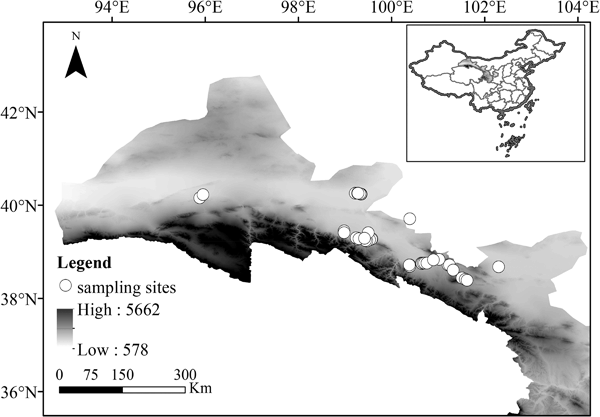Biomass and nutrient allocation strategies in a desert ecosystem in the Hexi Corridor, northwest China
Updatetime:2017-04-25From:
【Enlarge】【Reduce】
The allocation of biomass and nutrients in plants is a crucial factor in understanding the process of plant structures and dynamics to different environmental conditions.
In this study, we present a comprehensive scaling analysis of data from a desert ecosystem to determine biomass and nutrient (carbon (C), nitrogen (N), and phosphorus (P) allocation strategies of desert plants from 40 desert sites in the Hexi Corridor in northwestern China.
We found that the biomass and levels of C, N, and P storage were higher in shoots than in roots. Roots biomass and nutrient storage were concentrated at a soil depth of 0-30 cm. Scaling relationships of biomass, C storage, and P storage between shoots and roots were isometric, but than of N storage was allometric.
Results of a redundancy analysis (RDA) showed that soil nutrient densities were the primary factors influencing biomass and nutrient allocation, accounting for 94.5% of the explained proportion.
However, mean annual precipitation was the primary factor influencing the roots biomass/shoots biomass (R/S) ratio.
Furthermore, Pearson’s correlations and regression analyses demonstrated that although the biomass and nutrients that associated with functional traits primarily depended on soil conditions, mean annual precipitation and mean annual temperature had greater effects on roots biomass and nutrient storage.
This research achievement is published on Journal of Plant Research.

Fig. Distribution of 40 sampling sites in the Hexi Corridor (Image by Yongzhong Su)
Appendix




